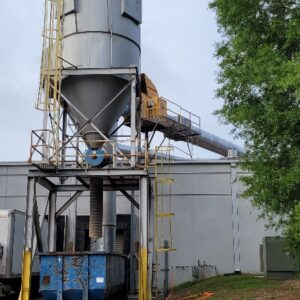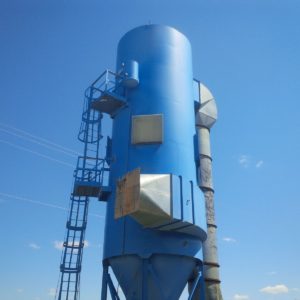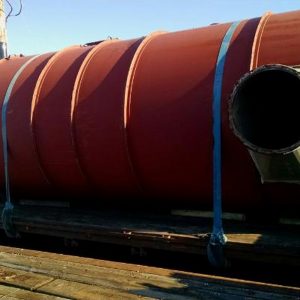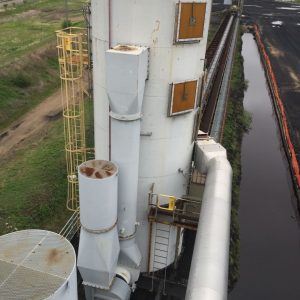Reverse Air
In reverse-air baghouses, the bags are fastened onto a cell plate at the bottom of the baghouse and suspended from an adjustable hanger frame at the top. Dirty gas flow normally enters the baghouse and passes through the bag from the inside, and the dust collects on the inside of the bags.
Reverse-air baghouses are compartmentalized to allow continuous operation. Before a cleaning cycle begins, filtration is stopped in the compartment to be cleaned. Bags are cleaned by injecting clean air into the dust collector in a reverse direction, which pressurizes the compartment. The pressure makes the bags collapse partially, causing the dust cake to crack and fall into the hopper below. At the end of the cleaning cycle, reverse airflow is discontinued, and the compartment is returned to the main stream. The flow of the dirty gas helps maintain the shape of the bag. However, to prevent total collapse and fabric chafing during the cleaning cycle, rigid rings are sewn into the bags at intervals. Space requirements for a reverse-air baghouse are comparable to those of a shaker baghouse; however, maintenance needs are somewhat greater.
A true reverse-air baghouse has a continuous reverse air fan at the top of the sweep arm. Our listings include these along with reverse pulse filter cleaning systems.
Showing all 5 results
-

ALL REVERSE AIR (3)
-

Air Cure (2)
-

Donaldson Torit (1)
-

Gerber (1)
-

Pneumafil (1)
-

Air Cure 484RF8 (30,000 CFM) Used Baghouse Dust Collector
-

Air Cure 544RF12 (65,000 CFM) Used Baghouse Dust Collect
-

Donaldson Torit 376 RF 12 (50,000 CFM) Used Baghouse Dust Collector
-

Gerber (16,000 CFM) Used Baghouse Dust Collector
-

Used Pneumafil 11.5-320-10 Straight Fire Dust Collection System
